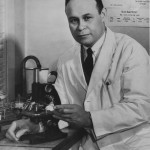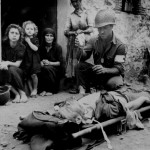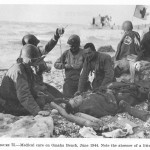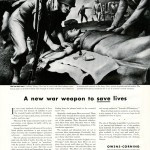SciTech Tuesday: New Lesson Plan on Blood Plasma
Learn about the medical advances of WWII with our newest lesson plan, A New War Weapon to SAVE Lives, exploring the innovative development of blood plasma for transfusions on WWII battlefields. Focused on the work of medical pioneer Dr. Charles Drew, the lesson combines primary sources with hands-on activities to meet both Common Core State Standards for Literacy and Next Generation Science Standards. The science of blood transfusion paired with the great necessity of a new technology to save wounded soldiers will engage and inspire young learners.
During WWII the use of blood plasma was an essential component of treating wounded soldiers. Red blood cells, absent from plasma, contain substances called antigens which determine blood type. Because these antigens are missing, the need to match the blood type of the donor to the recipient is unnecessary. In addition, dried plasma can be stored for long periods of time without refrigeration and transported across great distances. Medics on the battlefield simply reconstituted the dried plasma by adding water before transfusion.
- Dr. Charles Drew. Image courtesy of the National Library of Medicine.
- Private Roy Humphrey of Toledo, Ohio, is administered blood plasma by Private First Class Harvey White of Minneapolis, Minnesota, after he was wounded by shrapnel on 9 August 1943 in Sicily. Image courtesy of National Archives and Records Administration.
Private Roy Humphrey of Toledo, Ohio, is administered blood plasma by Private First Class Harvey White of Minneapolis, Minnesota, after he was wounded by shrapnel on 9 August 1943 in Sicily. Image courtesy of National Archives and Records Administration.
- Plasma transfusion on Normandy beach, June 1944. Image courtesy of the U.S. Army Office of Medical History.
- A new war weapon to save lives. From the Education Department Collection at The National WWII Museum.
Post by Annie Tête, STEM Education Coordinator








Leave a Reply